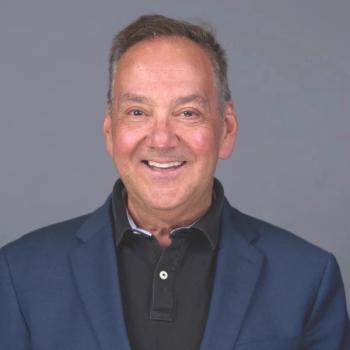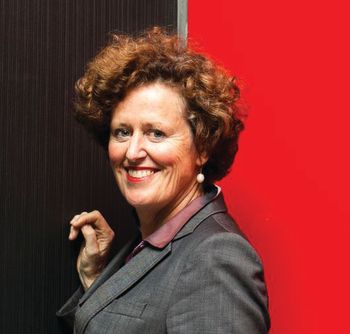
Appropriate Care After Nonfatal Overdose in Teens Stunningly Poor
New research highlights the critical need for quality addiction treatment, especially for younger patients. The lead author provides insights about interventions and obstacles to treatment in this Q&A.
Q&A
A large cohort study found that only a small percentage of teens received proper aftercare following near-fatal overdoses.
Psychiatric Times (PT): Your research highlights the need for quality treatment, especially for younger patients. What other insights can you provide about interventions and obstacles to treatment?
Rachel H. Alinsky, MD, MPH (RHA): We need to find effective interventions that can link adolescents and young adults directly into treatment after an opioid overdose. We also need to evaluate what barriers exist to accessing care at the time of overdose (such as insurance restrictions, lack of community providers or treatment centers, stigma), and find strategies to mitigate these barriers. System-level changes will be necessary, such as targeted federal funding for research and treatment for youth, decreasing insurance barriers, and increasing the availability of youth-serving physicians and addiction treatment centers.
PT: The study observes, “Nonfatal opioid overdose may be a critical touch point when youths who have never received a diagnosis of opioid use disorder can be engaged in treatment.” Can you tell us more about that? What can you tell us about stigma and recovery?
RHA: In the addiction treatment field, we actually don’t abide by the old adage of people having to “hit rock bottom” before they are ready to get treatment. This is somewhat of a myth. What we are trying to emphasize in our article is that overdose is a particularly crucial time that we can draw someone into treatment because they are presenting into the medical setting, seeing doctors, and we have this opportunity to interact with them and offer them treatment. Coming into the emergency department with an overdose may be the only time this person is sitting face to face with a doctor, and we want to capitalize on this opportunity to offer the best care we can to the patient.
This does not mean they did not want treatment a month ago or a week ago-they very well might have wanted treatment but not known how to access it amidst a very difficult to navigate addiction treatment system. So, when the patient is physically with us after an overdose, we have the chance to help them gain access to this life-saving treatment that otherwise would have been hard for them to get.
PT: What key points derived from the study would you like psychiatrists to know? About addiction? About opioids? About younger patients?
RHA: Prior to this study, we knew that teens and young adults were about
We found that less than less than 1 in 50 adolescents and young adults who had an opioid overdose received the standard of care medication treatment that is
When an adolescent or young adult goes to the hospital with an emergency-you expect them to get the treatment they need. But here we see that less than 2% are getting that treatment, which would not be acceptable for any other medical condition. In pediatrics, we would not accept it if only 1 in 50 youth with asthma got the standard treatment when they came into the emergency department, or if 1 in 50 youth with diabetes got the standard treatment if they were hospitalized with diabetic ketoacidosis. Pediatricians just wouldn’t find that treatment gap acceptable. Yet this is where are now with the treatment our system is able to provide to youth who have an opioid overdose-and we need to do better for them.
Additionally, the high rates of recurrent overdose that we found mean that it is all the more important to get these youth into effective treatment as soon as possible to try to prevent another overdose. It is important to note that prescribing practices be closely monitored in young people, a critically neglected patient population when it comes to addiction monitoring. As verified in an earlier study of 2,752,612 adolescents: “Safe opioid prescribing practices are critical to mitigate the risk of prescription opioid overdose in adolescents and young adults.”5
PT: What symptoms do younger patients often present that clinicians might miss?
RHA: In the case of youth who are presenting with opioid overdose-this is not a subtle finding that one might miss. There is a chance, however, that clinicians may view this as a standalone incident, and not recognize it as a manifestation of an adolescent’s underlying opioid use disorder. Thus, clinicians should be thinking about and evaluating for opioid use disorder in any youth that is presenting with an overdose, by probing for criteria such as taking the opioid in larger amounts than intended, unsuccessful efforts to cut down, cravings, recurrent use despite failure to fulfill obligations at school or home, or recurrent use in physically hazardous situations.
PT: What do we know about diagnosis and treatment options?
RHA: The diagnosis of opioid use disorder is straightforward and is based on how many criteria an individual meets from a set of 11 criteria defined in DSM-5. For youth with severe opioid use disorder, psychiatrists and other providers should be offering medication for opioid use disorder as first-line treatment, consistent with recommendations from the American Academy of Pediatrics. These medications include buprenorphine, methadone, and naltrexone. This can be combined with behavioral health services such as therapy/counseling, and the provider will need to determine the level of care that will best support the patient in their current stage of treatment-inpatient hospitalization, residential treatment, intensive outpatient, or outpatient treatment.
We know that medication is effective and life-saving for opioid use disorder, and large studies of adults have found that it cuts the risk of death in half.6,7 We also know that youth who are on medication stay in treatment longer.8 Because so few youth actually ever receive this effective addiction treatment, an overdose can be an ideal opportunity to link someone into care that has not been able to access it before.
PT: Can you provide clinical recommendations when working with parents and their children whose symptoms point to substance use?
RHA: Patients and their parents can try to advocate for treatment by asking their doctors about treatment when they are in the emergency department with an overdose. Some emergency departments have programs where they can immediately start patients on medication treatment right there in the emergency department, and then link them to a provider in the community. These programs have been shown to be extremely effective with much higher rates of people entering and staying in treatment than if someone is simply handed a phone number to call to set up treatment on their own.9 If that sort of linkage is not available, families should ask for assistance being referred to somewhere where their teen or young adult can receive treatment in their community as soon as possible.
For clinicians or patients and families who want to find out what treatment resources there are available within their community, they can go to the “Treatment Locator” provided by the Substance Abuse and Mental Health Services Administration (SAMHSA) by going online to
References:
1. Alinsky RH, Zima BT, Rodean J, et al.
2. Chua K-P, Brummett CM, Conti RM, et al.
3. National Institute on Drug Abuse. Overdose Death Rates.
4. Committee on Substance Use and Prevention.
5. Feder KA, Krawczyk N, Saloner B. Medication-assisted treatment for adolescents in specialty treatment for opioid use disorder. J Adolesc Health. 2017;60:747-750.
6. Larochelle MR, Bernson D, Land T, et al. Medication for opioid use disorder after nonfatal
opioid overdose and association with mortality: a cohort study. Ann Intern Med. 2018;169:137-145.
7. National Academies. Medications for Opioid Use Disorder Save Lives. March 20, 2019.
8. Hadland SE, Bagley SM, Rodean J, Silverstein M, et al. Receipt of Timely Addiction Treatment and Association of Early Medication Treatment With Retention in Care Among Youths With Opioid Use Disorder. JAMA Pediatr. 2018;172:1029-1037.
9. D’Onofrio G, O’Connor PG, Pantalon MV, et al. Emergency department-initiated buprenorphine/naloxone treatment for opioid dependence: a randomized clinical trial. JAMA. 2015;313:1636-1644.
Newsletter
Receive trusted psychiatric news, expert analysis, and clinical insights — subscribe today to support your practice and your patients.













